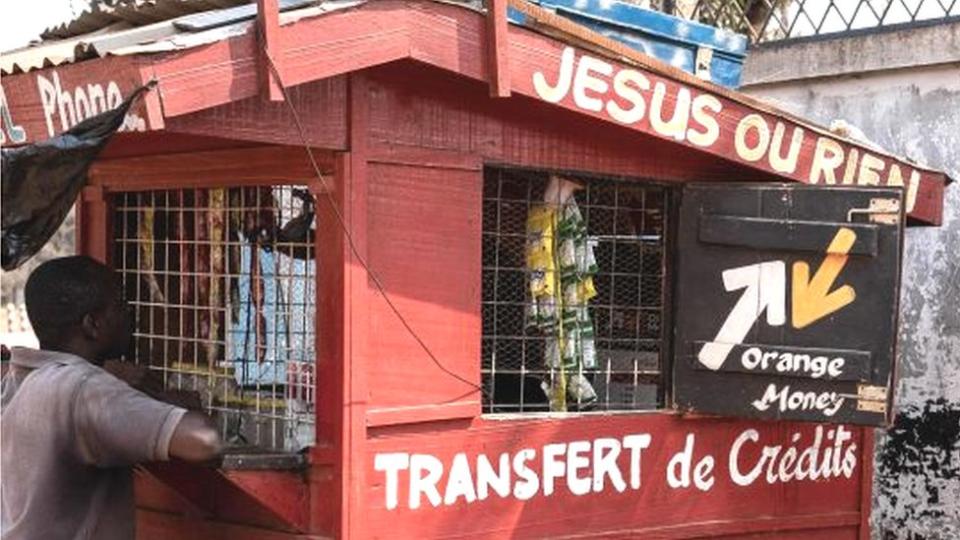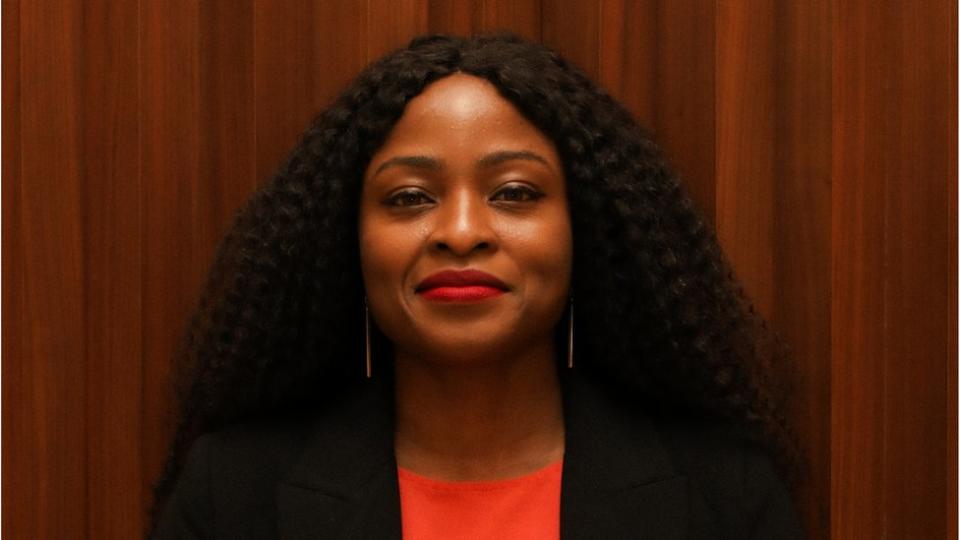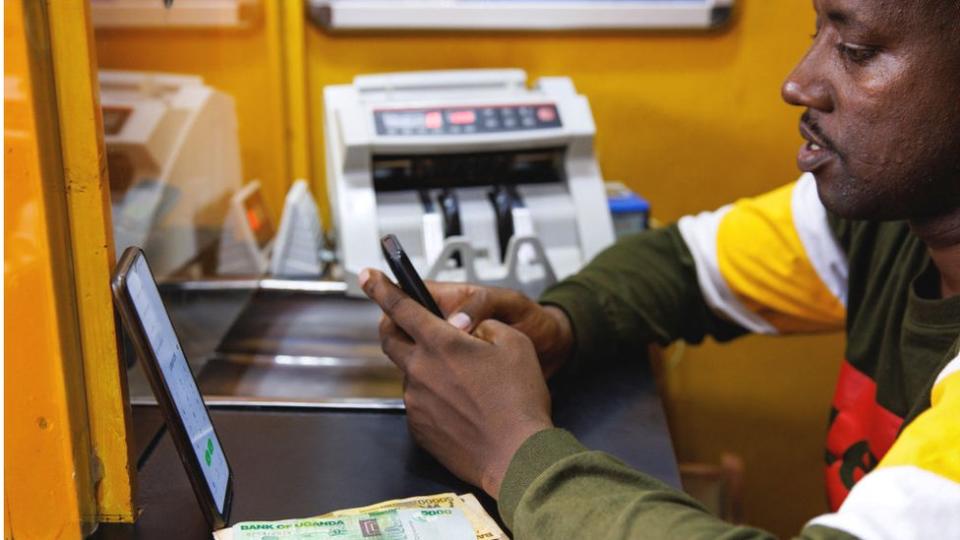Jerry Lukendo Mbokani has to make several calculations when sending money to his elderly mother in the Democratic Republic of Congo.
In Kampala, Uganda, where Mr. Mbokani has lived for 16 years, he first has to buy US dollars. Exchanging Ugandan shillings worth about $100 (£80) would cost almost $3, he reports.
He also adds the $7 withdrawal fee so his mother won’t be charged a fee when she receives the money.
It sends these transfers using mobile money, typically telephone digital transfers, rather than a physical location such as a bank, post office or Western Union-style money transfer company. In real terms, 10% of the amount could be eaten up by fees.
Mr Mbokani, the executive director of the Refugee-Led Organization Network (Relon), knows he is far from alone.
A goal of the UN Sustainable Development Goals is that by 2030, remittance fees should be less than 3% and the total fees for sending and receiving money between two countries should be no more than 5%. Some researchers believe that the first target should even be below 3% to be truly affordable.
The International Monetary Fund has estimated that achieving this target could generate $32 billion (£26 billion), even excluding direct cost savings.
That’s because remittances have such powerful ripple effects on the economy, and people tend to send more remittances when fees are lower.
But the world is a long way from this goal. According to the World Bank, the global average is 6.2%, more than double the target.


It is particularly expensive to send money to sub-Saharan Africa, where the average transaction fee is 7.4%. For certain country combinations, the fee percentages can rise significantly into the double-digit range.
One reason for high fees is inconsistent regulation.
Within Africa, a payment company cannot use a single license in multiple countries, says Nika Naghavi. She is Group Head of Growth at Onafriq, a digital payments network spanning more than 40 African countries.
As a result, even between neighboring countries with strong trade and frequent population movements, the flow of money cannot always flow freely. For example, Ms. Naghavi says that transfers between Togo and Benin are frequent and easy, supported by the common currency.
However, it is not easy to transfer money between Togo and another neighboring country, Ghana.
“That’s why the costs become high: a lot of it depends on compliance and regulation,” says Ms. Naghavi.
More business technology
These requirements may not apply as much to small amount transfers. Sending $50 to a relative in another country isn’t very risky, but it can still be subject to a complicated set of anti-money laundering regulations.
In some countries, “the rules governing who can act as a money transfer service provider can be quite overwhelming,” says Ravenna Sohst, a policy analyst at the Migration Policy Institute Europe.
“For young companies to enter this market, a lot of technical, financial and legal know-how is required, which I think is one of the reasons why there have been relatively few players in this area for a long time.”
Ms. Sohst says Mexico-U.S. is an example of a large remittance corridor where more competition has helped drive down prices. Without competition, rates can be set by the few companies (or informal, cash-based agents) capable of facilitating transfers between two countries.


Limited competition also means that companies may not feel the need to disclose much information about fees. “Sometimes it is up to the service providers what they want to show the customer,” says Uloma Ogba, gender and learning specialist for the UN Capital Development Fund (UNCDF) Migration and Remittances Program.
This can include misleading claims about fee-free transactions, which “often means that the service provider and other agents involved in that transaction process make money in other ways.”
“Our guiding principle should be to ensure that these customer fees are as close to zero as possible,” says Ms. Naghavi. “But today that’s not possible because of the underlying costs of running your business.”
In the event of disasters, such as those that occurred immediately after the 2023 Morocco earthquake, companies can temporarily reduce or eliminate transaction fees. But emergency costs also arise at other times.
Migrants in particular send money home to cover unexpected expenses. In Ms. Ogba’s own monthly remittances from the United States to Nigeria, she prioritizes her parents’ health care, her cousin’s education and community obligations such as funeral costs. There are also contributions for house renovations.
Flexible pricing structures would be particularly helpful for women. They typically earn less than men and often transfer smaller and more frequent funds for things like health care and education, Ms. Ogba says.
Because digital transfers are cheaper than traditional banking (with average fees of 4.8% and 6.2% respectively) and require less documentation, many innovations are taking place in the digital space.
For example, a fintech company serving Gambian migrants in the United Kingdom found that its customers wanted to pay their families’ electricity bills directly in Gambia.


It is impossible to talk about digital innovations in sending money without mentioning cryptocurrency. Some enthusiasts believe that Bitcoin and other types of cryptocurrencies promise smoother money transfers anywhere in the world.
However, volatility, patchy regulation and limited knowledge remain barriers to the adoption of cryptocurrencies for remittances.
Even more basic technologies may be inaccessible to people sending and receiving remittances. Although it is cheaper to send mobile money, many of the world’s poorest people do not have cell phones and internet access.
While at least half of transfers are now made digitally, cash transfers dominate in low- and middle-income countries.
Providing tax ID numbers and other documents can also be particularly difficult for people who are traveling or cannot obtain official identification.
In Uganda, Mr. Mbokani says, refugee ID cards are not part of the same central register as national ID cards. And some money transfer agencies may have barriers to using refugee ID cards.
Such problems mean that “we are leaving a lot of people behind,” comments Ms. Naghavi.
